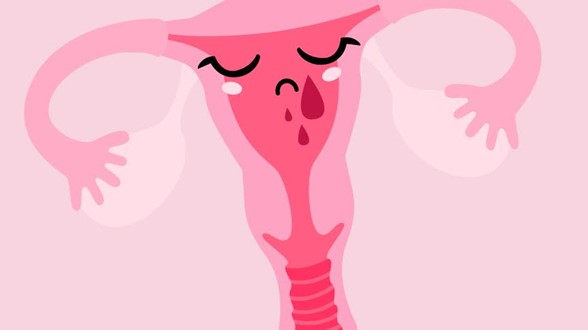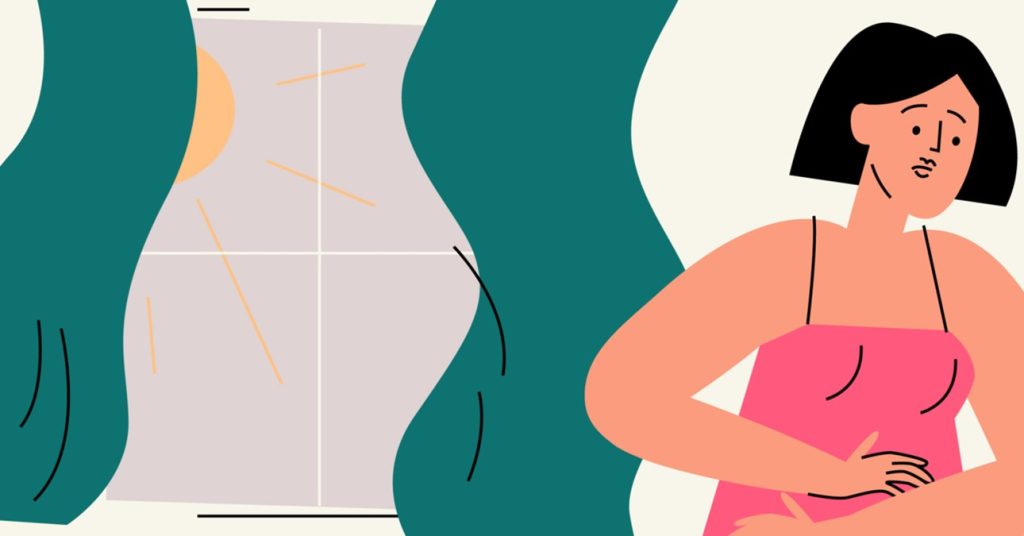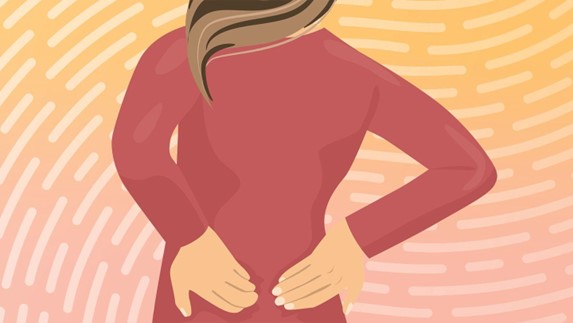A To Z Of Endometriosis Explained!
Endometriosis is a condition that causes the cells to be similar to the cells of the inner uterine lining known as the endometrium to appear outside of the uterine cavity. Endometrial cells can grow anywhere on the body, from the outer portion of the uterus to the ovaries, bladder and intestines but it happens rarely. Endometriosis affects 1 in 10 women worldwide but the cause of this condition is still unclear. Cyclical hormone changes cause the endometrium to shed each cycle and exit through the cervix and vagina along with menstrual blood. Some say it might be happening because of the blood and cell’s ability to enter the abdominal cavity through the uterine tubes and grow in those places whereas others say that the cells grow in the wrong locations during fetal development.
Genetic factors and environmental influences may also contribute to the development of this condition. These endometrial lesions are often associated with inflammation in the affected organs. Common symptoms of endometriosis are painful periods and sexual intercourse, pelvic pain, heavy menstrual bleeding and difficulty getting pregnant. In this blog, i’m going to focus on the risk factors, conditions with similar symptoms and ways to diagnose and treat endometriosis.

Risk factors for Endometriosis
Endometriosis can affect anyone with an uterus from the time they start menstruating until they enter menopause. The risk of developing endometriosis has been observed to significantly reduce with repeated pregnancies, childbirth and long-term breastfeeding. It doesn’t provide total immunity to this condition but it does reduce the risk compared to people who’ve never had a full-term pregnancy.
As we know, there’s no clear answer as to what causes endometriosis. Several factors may contribute to causing endometriosis such as –
- Metaplasia, a process where one tissue turns into another. In this case, endometrial cells replace peritoneal cells and are rejected undergoing the same process during menstruation as they do in the uterus.
- Heredity because it has been seen that one is usually 4-7 times more likely to get endometriosis if their close relative had endometriosis as well.
- Retrograde menstruation, as we talked about it earlier, blood flows in the opposite direction, from the uterus to the pelvic organs where endometrial cells can grow.
- Immune and endocrine disorders also play a role in this because of its involvement with how the body fights back to this painful condition.
Endometriosis often affects unusual places such as the scar after a cesarean section or an episiotomy or the area where a uterine polyp or myoma has been removed. All these lesions can have different symptoms. Unfortunately, endometriosis can usually only be confirmed during a diagnostic operation such as a laparoscopy, hysteroscopy or an MRI scan. Only a doctor can assess the need for surgical intervention, if need be, varying in individual cases.

Diagnosing Endometriosis
It is a condition that should be diagnosed as soon as possible to make treatment effective. A patient’s history includes self-reported complaints and a clinical check up which are crucial components for making a diagnosis in this case. First of all, we do have to remember whichever method is used for diagnosis depends on one’s doctor and which options are available and affordable at the moment to the patient. The least invasive method should always be given priority as long as it’s possible. However, the check up should not be put on hold because delaying diagnosis and treatment may lead to more complications.
Taking a thorough clinical history should be the first step in assessing symptoms such as pain during periods, sexual intercourse and bowel movements, chronic pelvic pain and fatigue. When endometrium like tissue starts to grow elsewhere in the body, it goes through the same cyclical phases as the endometrium in the uterus. The tissue also secretes a pain-producing chemical called cytokines. Pain related to endometriosis often starts before menstruation, becomes almost unbearable during it and vanishes after it ends. It approximately lasts for 3 weeks before it starts building up again.
Ultrasound is a non-invasive option that plays an essential role in diagnosing it. It helps to identify the disorder when it involves the ovaries, bowel, bladder or ureter. MRI usually isn’t involved in primary diagnostics but it can be used to assess severe endometriosis. Laparoscopy and the examination of any removed endometrial foci (clumps of endometrial cells), are the most accurate procedure in diagnosing endometriosis. This is a minimally invasive surgery that allows for a systematic inspection of the pelvis that is highly accurate at detecting endometriosis but naturally, is still associated with surgical risks as well.

Conditions that share symptoms with Endometriosis
There is a wide range of symptoms that may indicate endometriosis but can also indicate other reproductive disorders, common symptoms in both of those scenarios are painful periods, pelvic pain not related to menstruation, painful intercourse or pain following intercourse, difficulty conceiving, fatigue, pain during defecation/urination, heavy menstrual bleeding, etc.
If you do experience these symptoms, it’s sensible to get a doctor’s insight on this situation. Knowing what’s causing your discomfort can make coping with it a lot easier. The above-mentioned symptoms can be a symptom of disorders like uterine fibroids, endometrial or cervical polyps, pelvic inflammatory diseases (PID), ovarian cysts, dysmenorrhea, polycystic ovary syndrome, etc. These conditions along with those symptoms can affect one’s well-being and interfere heavily with their lives.

Treating Endometriosis
Pain medications can help reduce the pain associated with endometriosis but it doesn’t treat the source of the pain. Even though these medications are widely used, they still carry the possibility of having severe side effects like any other drugs so always consult a doctor before trying this treatment course. Among people who get medical care for their endometriosis, almost half of them are satisfied with their treatment. It is important to take medications on a regular basis to not decrease the treatment’s efficiency.
Hormonal treatment works by suppressing endometriosis growth and also reduces the pain. This treatment includes hormonal birth control, progestogens, anti-progestins, GnRH agonists and antagonists. Though this course is avoided if the patient is trying to conceive as these hormonal treatments can affect ovulation, leading to difficulty getting pregnant and the sudden change to the hormones is temporary.

Surgical intervention can eliminate endometriotic foci and restore pelvic anatomy, which may have been damaged by inflammation. First, the endometrial foci are excised or coagulated, then the adhesions are dissected, tubal patency is checked and endometrial cysts are removed if there’s any. Laparoscopy has a quicker recovery time, causes less pain and ensures that the endometriosis pain is significantly reduced and only leaves a small scar. After this, recurrence of endometriosis is possible so hormone treatments are prescribed to prevent this from happening. Stopping a treatment course midway only does harm more than good.
Nutritional supplements and alternative medicines are also used sometimes for the treatment of endometriosis associated pain. Though there’s not enough research to prove the effectiveness of these methods, it usually gives positive results. Treating endometriosis might seem challenging but it is always a good idea to assess all the options with one’s doctor in order to have an informed consensus in this situation.

Conclusion
About 176 million women worldwide experience this condition. Diagnosing endometriosis often requires complex examination or even surgical management. Endometriosis is tricky to manage and it’s important to acknowledge that it won’t always be straightforward all the time. But that is why it’s also important to know the several tools present that can help with the painful symptoms and general discomfort. Relieving symptoms and curing endometriosis is usually a long process. If you are experiencing endometriosis, it is best to find a doctor who specializes in endometriosis treatment and remember, every case is different and personal, so the course of action will also be different for everyone.
Written by: Tithi
Author

